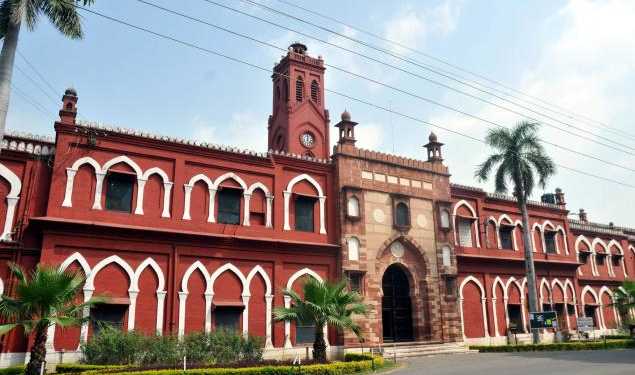The recent AMU-Jinnah controversy whereby the students’ union of the university has not only refused to take down the portrait of a controversial leader who was responsible for millions of deaths displayed in their office but have also glorified the fundamentalist responsible for the violent partition. However, this is not the first time that the central university has come under the scanner. In fact, the university has been carrying a defective minority status, even after being a central university since 1981.
The Supreme Court of India had decided on the issue of minority status of the Aligarh Muslim University in 1967 itself. It had observed that under Article 26 (a) of the Constitution of India, every religious denomination has right to establish and maintain institutions for religious and charitable institutions. The words “establish and maintain” are to be read together. This implies that only those institutions which a religious denomination establishes which it is entitled to maintain. The apex court observed that the AMU was not established by the Muslims and therefore it was not entitled to claim the right to ‘maintain’ it. It was established by an Act of Parliament of 1920. At this point, the Supreme Court decided the question of AMU’s establishment conclusively. The question having been settled, the AMU was not entitled to claim the right to administer and maintain the institution under Article 30 of the Constitution of India.
There was not much of a technical issue in the case. It was prima facie clear that the university had not been established by Muslims but by an Act of Parliament. However, the Congress does not care much for constitutional values and judicial opinion when it comes to Muslim appeasement. Therefore, the Parliament amended the 1920 Act in 1981 in a bid to accord minority status upon the AMU. The erstwhile Indira Gandhi government therefore made a desperate attempt to overrule the Supreme Court judgment through legislation. It is beyond comprehension how have the parliament arbitrarily accorded the tag of “minority” status upon a central university. The amendment itself seemed to be an absurdity. However, the sad state of affairs in total disregard to the Constitution of India continued for 25 years. It was the judiciary again that came to the rescue and this time Allahabad High Court struck down the amending provision wrongfully according minority status to AMU. In the course of its judgment, the Allahabad High Court held that the AMU (amendment) Act of 1981 must give way to the Azeez Basha judgment passed by the Supreme Court in 1967. The Court took the then UPA government which was defending the minority status of AMU to the cleaners. The Court correctly remarked that it is an absurdity to create a minority institution out of thin air. Only a minority can establish a minority institution. It is not possible for the state to establish a minority institution that too in a secular country. It further observed that it is the exclusive domain of the courts to determine whether an institution has been established by a minority and whether it falls in the purview of Article 30 of the Constitution. Parliament cannot perform this function through legislation.
Even after being exposed in the open for this irregularity, the Congress chose to continue with its ulterior motives and appealed against the division bench judgment before the Supreme Court. However, the Modi government had stated its case before the Supreme Court and has refused to challenge the Allahabad High Court judgment. It is shocking how the Congress had gone out its way to accord minority status upon a central government university in order to maintain electoral equations. The minority status of AMU is extra-constitutional in nature and in complete contraception of the observations made by the courts including those of the apex court. No institution is above the Constitution even if it is claimed to be a minority institution. The government should undo the damage caused by the previous Congress governments and come out with an Act expressly declaring AMU to be a central university.






























